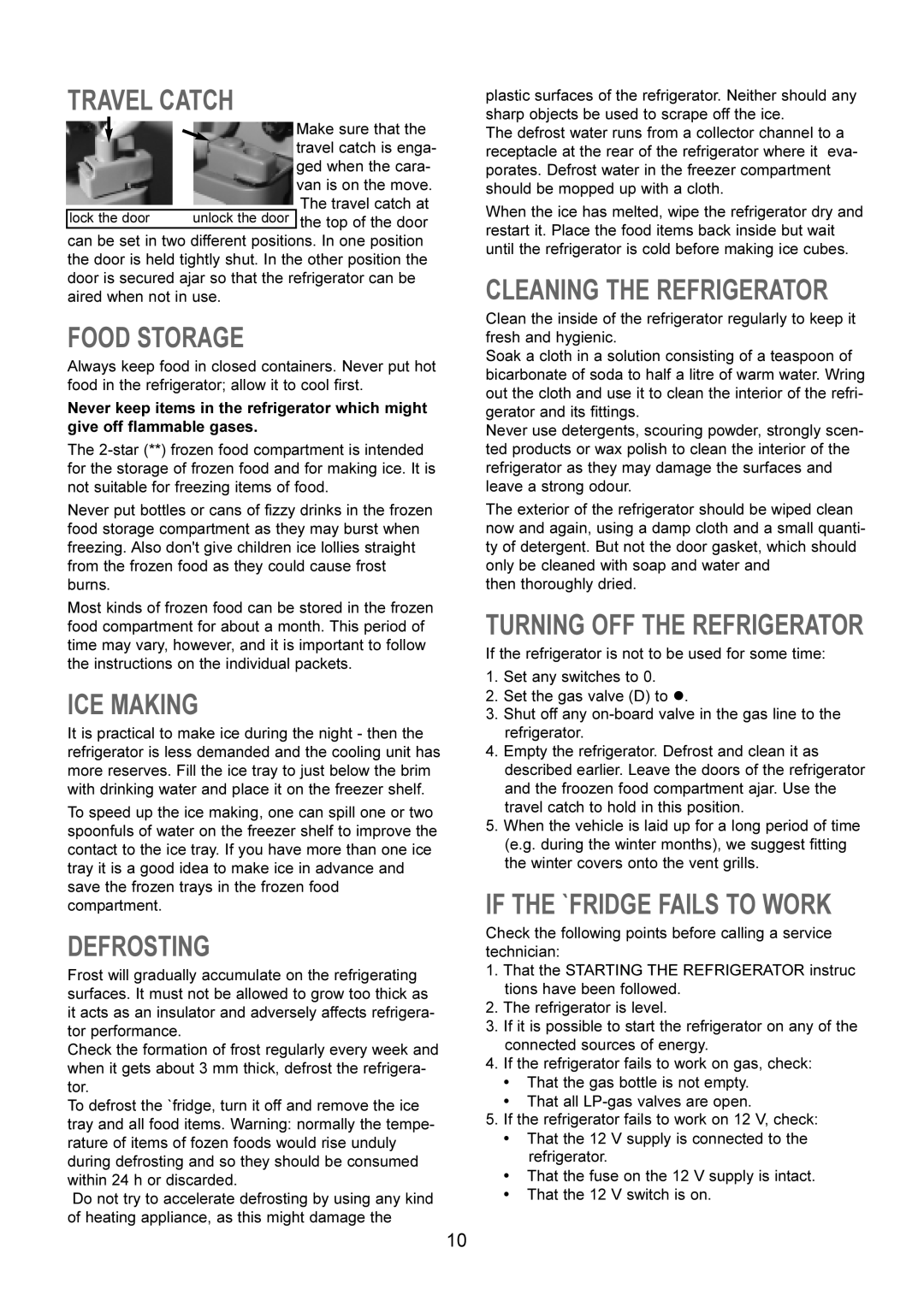RM 4361NDM, RM 4361DM specifications
The Dometic RM 4361DM and RM 4361NDM are both versatile and efficient absorption refrigerators specifically designed for mobile applications, such as RVs, boats, and campers. These models are known for their reliability and ability to operate quietly, making them ideal for a variety of outdoor adventures and travel experiences.One of the standout features of the RM 4361DM and RM 4361NDM is their absorption refrigeration technology. This technology allows the refrigerators to maintain a consistent cooling temperature without the need for a compressor, which is particularly beneficial in spaces where noise levels must be kept to a minimum. The absorption process utilizes a combination of heat, typically provided by propane gas or electric power, to create a chilling effect that is both effective and energy-efficient.
Both the RM 4361DM and RM 4361NDM models offer a generous cooling capacity, ensuring that users can store ample food and beverages during their travels. With a total capacity of around 3.6 cubic feet, they are well-suited for weekends away or extended trips, providing ample space for perishable items and drinks. The adjustable shelves and door compartments ensure that users can organize their items for easy access.
In terms of energy efficiency, both models have been designed to minimize power consumption. They can operate on different power sources, including 12V DC, 110V AC, and propane gas, making them adaptable to various setups, whether you’re off-grid or docked at a campground. This versatility allows users to choose the power source that best suits their needs and circumstances at any given time.
The RM 4361DM features a sleek and modern design that complements any RV or boat interior. The stainless steel finish not only adds to its aesthetic appeal but also enhances durability, making it capable of withstanding the rigors of travel.
Moreover, the user-friendly controls simplify the operation of the refrigerator, allowing users to effortlessly set and adjust the temperature as needed. The automatic energy selection feature intelligently chooses the most efficient energy source available, further enhancing convenience.
In conclusion, the Dometic RM 4361DM and RM 4361NDM are excellent choices for those seeking reliable, efficient, and adaptable refrigeration solutions for their mobile lifestyles. With their impressive cooling capacity, energy efficiency, and modern design, these refrigerators are set to enhance any outdoor experience.

